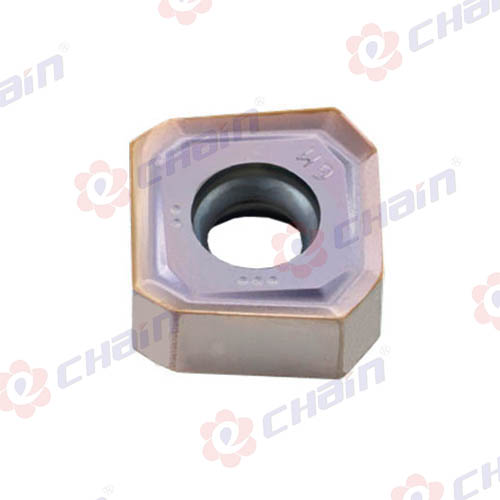What is the relationship between milling insert size and the cutting forces generated during machining
2023-10-26
The size of a milling insert, particularly its width and thickness, has a direct relationship with the cutting forces generated during machining. The cutting forces are influenced by various factors, and insert size is one of them. Here's how the size of the milling insert affects cutting forces:
1. Insert Width (Radial Depth of Cut): The width of the insert, which corresponds to the radial depth of cut, significantly influences the cutting forces. A wider insert removes more material in a single pass, which can lead to increased cutting forces. As the insert width increases, so do the radial forces acting on the tool. This can be advantageous for roughing operations where material removal rates need to be high.
2. Insert Thickness (Axial Depth of Cut): The thickness of the insert, which corresponds to the axial depth of cut, also impacts cutting forces. A thicker insert allows for a deeper cut, leading to higher axial forces. In cases where deep cuts are necessary, a thicker insert can provide the rigidity required for effective machining.
3. Cutting Speed and Feed Rate: The cutting speed and feed rate are two primary factors that, when adjusted, can help control cutting forces. Higher cutting speeds and lighter feed rates reduce the cutting forces, while lower cutting speeds and heavier feed rates result in increased forces. The combination of cutting speed and feed rate should be carefully balanced with insert size to achieve desired results.
4. Workpiece Material: The material being machined plays a significant role in cutting forces. Harder materials typically require higher cutting forces, regardless of insert size, due to the increased tool-material interaction and deformation resistance.
5. Tool Material and Coating: The type of material from which the insert is made, as well as any coatings, affects its wear resistance and, consequently, the forces required for effective cutting. Harder tool materials can withstand higher cutting forces without excessive wear.
6. Machine Rigidity: The rigidity of the milling machine, toolholder, and workholding system can impact the cutting forces. A rigid setup can accommodate higher cutting forces without vibration or deflection, leading to more stable and productive machining.
7. Toolpath Strategy: The toolpath strategy chosen for a machining operation can influence cutting forces. For example, conventional cutting (up milling) typically generates higher forces compared to climb milling (down milling) due to the direction of chip formation and engagement.
8. Insert Geometry: The geometry of the insert, including the rake angle and chipbreaker design, can affect chip formation and control. Effective chip control can help manage cutting forces and prevent chip-related issues.
9. Cutting Condition Optimization: The choice of insert size should be part of an overall optimization process that considers factors like tool life, surface finish, and specific production requirements. Adjusting the cutting conditions (speed, feed, depth of cut) in conjunction with insert size can help achieve optimal results.
In summary, the size of a milling insert, particularly its width and thickness, directly influences the cutting forces during machining. Insert size must be chosen based on the specific requirements of the application, taking into account workpiece material, machining strategy, machine rigidity, and other factors to balance material removal rates and cutting forces effectively.



